Recent Articles
Popular Makes
Body Types
2017 Chevrolet Silverado vs. 2017 Ford F-150: Which is Best?
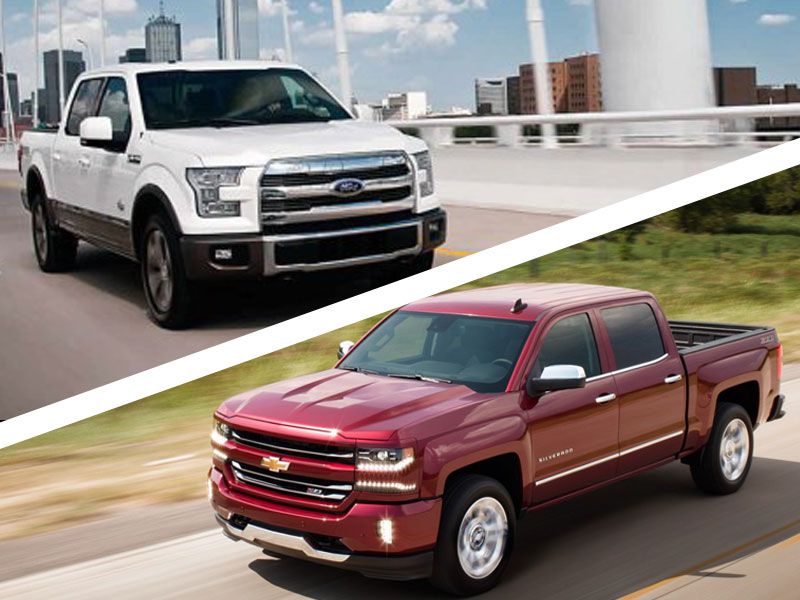
2017 Ford F 150 vs 2017 Chevrolet Silverado ・ Photo by Ford and General Motors
Ford vs. Chevy: It’s an epic battle that has been raging for years, and for some truck buyers their choice of brand is as unalterable as their religion or their favorite football team. The reality is that these are two very different trucks, and for buyers who are open to either brand, there are some definitive differences. Let’s take a closer look at the 2017 Chevrolet Silverado 1500 and 2017 Ford F-150 and see if we can decide, once and for all, which is the better truck.
Pricing and Trim Levels
Chevrolet offers the Silverado 1500 in six basic trim levels: Work Truck, LS, Custom, LT, LTZ, and High Country. And if that’s not enough segmentation, the LT and LTZ models are each divided into two trims (1LT and 2LT, 1LTZ and 2LTZ). The least-expensive configuration—a regular-cab, regular-bed, WT-trim Silverado with a V6 engine and 2-wheel-drive—lists for $28,780 including destination fee. On the other end of the scale, a fully-loaded Silverado High Country long-wheelbase crew-cab 4x4 can run as high as $69,205 with options. Ford’s F-150 lineup is no simpler; trim choices include XL, XLT, Lariat, King Ranch, Platinum, and Limited models. But Ford’s starting price is cheaper: A bare-bones F-150 XL lists for $27,735, more than a grand less than the Silverado. That said, you can also spend more on an F-150, as a fully-kitted-out F-150 Limited lists for $69,645.
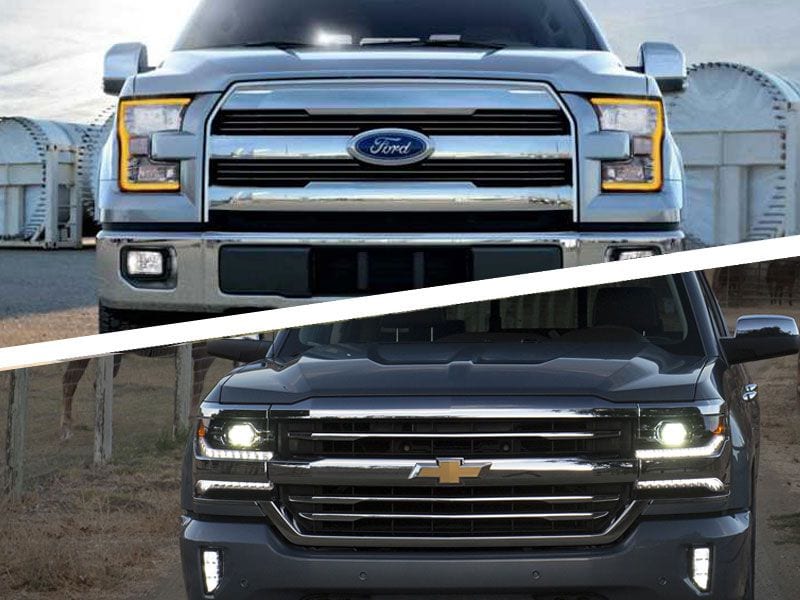
Photo by Ford and General Motors
Options
pickup trucks used to be beasts of burden; now they offer many of the creature comforts found in luxury cars. Peruse the option list on the Silverado—better get a nice cold beverage, as it’ll take you a while—and you’ll find features like a sunroof, navigation, automatic wipers and high-beams, an active noise cancellation system, a trailer brake controller, and a wireless charger for cell phones. But the F-150 goes even further with goodies not offered on the Silverado, including keyless push-button ignition, a panoramic moonroof, a nifty integrated tailgate step, adaptive cruise control, a self-parking system (the driver operates the shifter, gas and brakes while the truck steers itself into a spot), and an automated trailer-backing system (more on that in a moment).
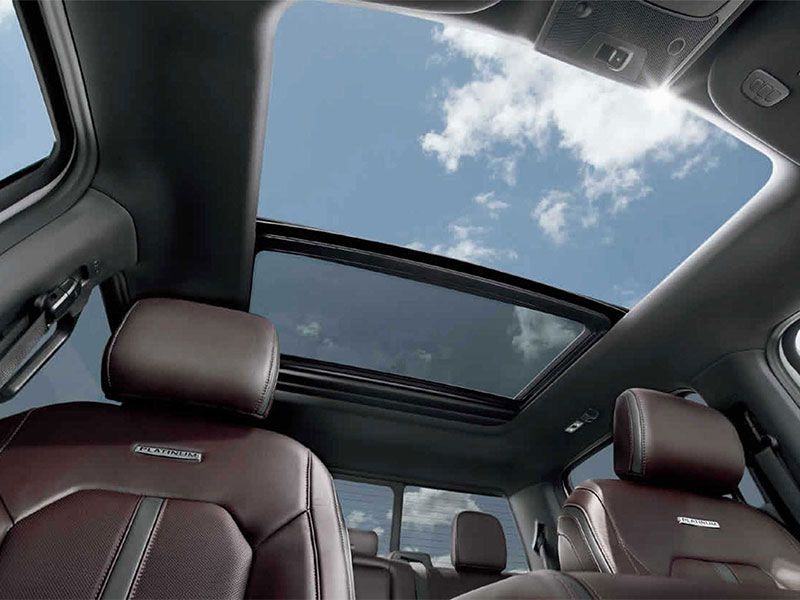
Photo by Ford
Powertrains and Efficiency
Chevrolet offers a V6 engine and two V8s, all designed specifically for use in trucks and are designed to deliver strong low-end torque for low-speed pulling power. Though the mechanical bits may look old-fashioned—two pushrod-operated valves per cylinder, as opposed to newer overhead-cam 4-valve designs, and no turbochargers—these engines were completely redesigned between 2013 and 2014, and they have cutting-edge features such as direct fuel injection, variable valve timing, and cylinder deactivation, the latter allowing the engine to run on four cylinders when power demands are low. Engine choices include a 285-hp 4.3-liter V6, a 355-hp 5.3-liter V8, and a 420-hp 6.2-liter V8. Chevy pairs the 4.3-liter V6 with a 6-speed automatic, while the 6.2 V8 gets an 8-speed; the 5.3 can be had with both transmissions. EPA fuel economy ratings range from 18 MPG city/24 MPG highway for the V6 down to 15/20 for the 6.2-liter V8.

Photo by General Motors
Powertrains and Efficiency (con't)
At first glance, the F-150’s powertrain lineup appears more modern, though most of these engines also see duty in Ford’s cars and SUVs. The entry-level 3.5-liter V6 produces 283 hp, similar to Chevy’s V6, though its 255 lb-ft of torque trails the Chevy’s 305 lb-ft. The 5.0-liter “Coyote” V8 delivers 385 hp and out-torques Chevy’s 5.3-liter V8, 387 lb-ft to 383. Ford has also embraced twin-turbocharged engines, with two EcoBoost offerings for the F-150. The 2.7-liter V6 delivers the horsepower and torque of a small V8—325 hp and 375 lb-ft—with better EPA fuel economy ratings (18 MPG city/24 MPG highway, same as Chevy’s V6). Top of the lineup is the updated 3.5-liter EcoBoost V6, now offered with 375 horsepower or 450 hp in the new high-output version. The 3.5 EcoBoost engine gets a 10-speed automatic transmission for 2017, while the other engines stick with a 6-speed automatic.
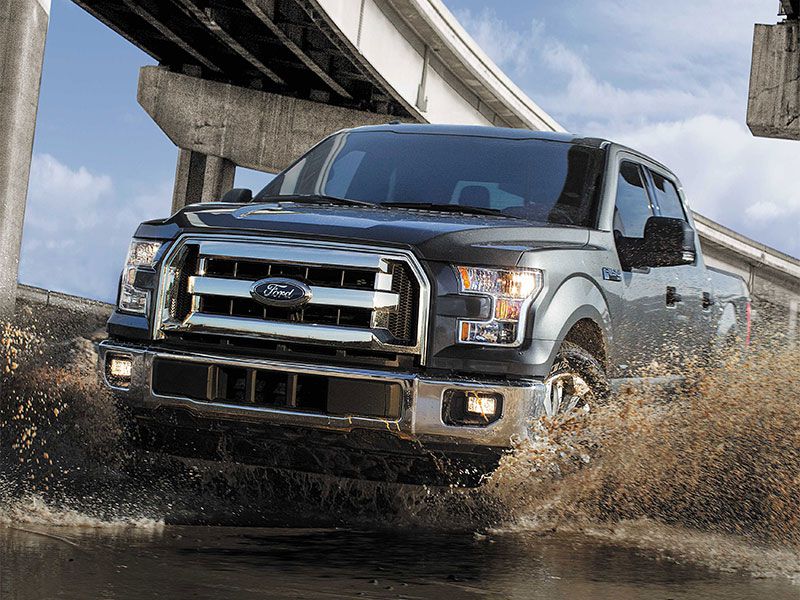
Photo by Ford
Standout Features
For 2017, Chevrolet has introduced a Teen Driver feature, which allows parents to see how far the truck was driven, the maximum speed, and what, if any, safety features (such as the automatic-braking feature) were triggered. The F-150’s killer app is its automatic trailer-backing system: Once calibrated, the driver can steer the trailer when backing by using a dial on the dashboard, while the electric power steering system twirls the steering wheel as needed. It’s a fantastic feature that makes backing up a trailer a nearly foolproof operation, and even experienced trailer-backer-uppers will appreciate the convenience.
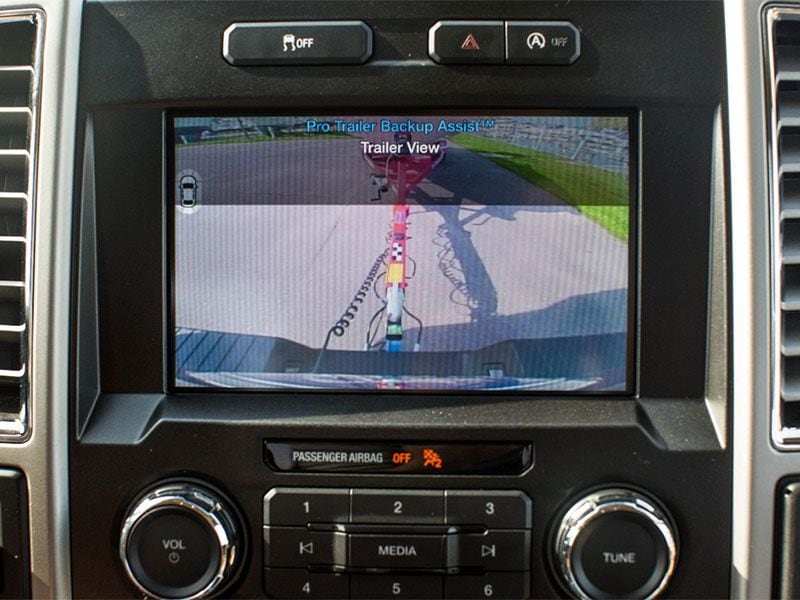
Photo by Ford
Exterior Design
The Silverado 1500 was last redesigned in 2013, and it looks good: Solid and staid, with a clear family resemblance to the larger Silverado HD trucks. To help keep up interest, Chevrolet offers the Silverado in several special editions such as the Midnight Edition, which features blacked-out wheels, trim and bow tie emblems. The F-150 as we know it was introduced in 2015, and its most distinctive feature was not the shape of the sheetmetal, but the metal out of which it is made: The F-150’s cab and box are aluminum, which saves weight. Styling is similar to the previous-generation F-150 (perhaps to ease the transition for traditional buyers to this new material), but we like it: The F-150 looks lighter and more athletic than the Silverado.
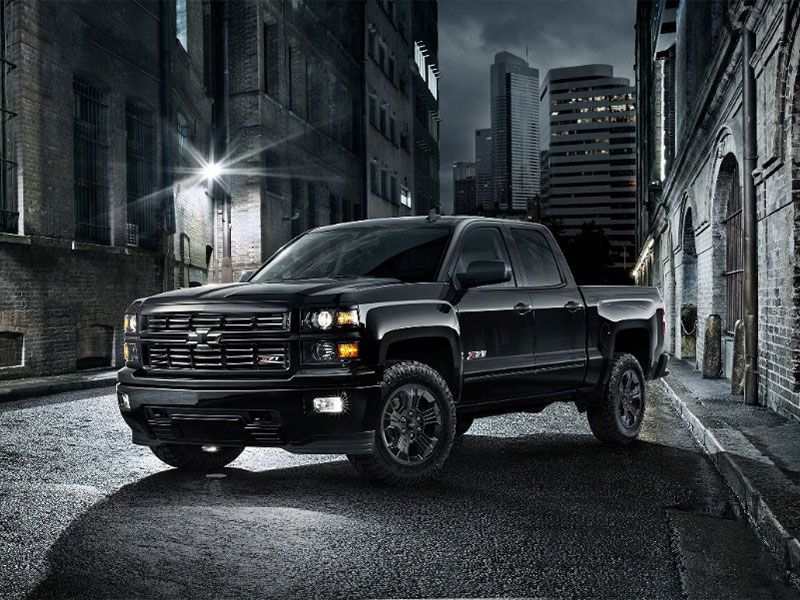
Photo by General Motors
Interior Design
It’s hard to find fault with the Silverdo’s cabin. All versions feature a column-shift transmission and an instrument panel that provides lots of information. Chevy takes advantage of the great expanse of real estate on the Silverado’s dash; the buttons and dials are large and control clusters are spread out for easy differentiation. The touch-screen stereo, which uses the Chevrolet MyLink interface, is one of the more intuitive systems on the market. By contrast, it takes a little more time to learn one’s way around the F-150’s look-alike controls, and we’re not as fond of Ford’s stereo and navigation interface. But we do like the available instrument-panel-mounted video screen; learn your way around and you can order up exactly the information you crave. Lower-trim F-150s feature a column shifter that isn’t as precise as Chevy’s; higher trim trucks have a console shifter, which looks sportier but eliminates the possibility of three-across seating up front.
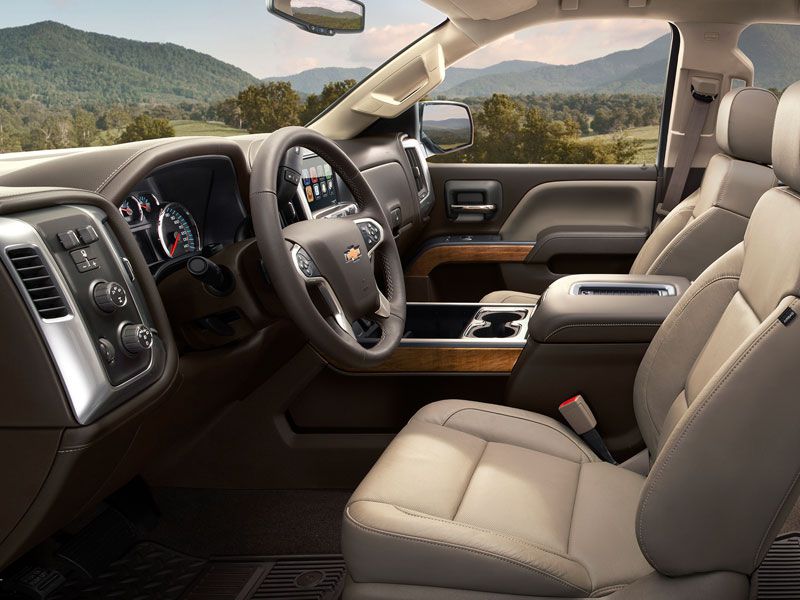
Photo by General Motors
Cargo Capacity
Though these are considered “half-ton” trucks, in truth their payload and towing capacity vary with their configuration—engine, transmission, bed and cab length, and other parameters. For the Silverado 1500, maximum payload ranges from 1,670 to 2,250 lbs, while towing capacities range from 5,500 to 12,500 lbs (though gooseneck/5th-wheel towing tops out at 11,700 lbs). The F-150’s lightweight aluminum construction is supposed to increase payload capacity; indeed, there are several variants of the F-150 that exceed the Chevy’s maximum payload, and it can be configured to haul up to 3,270 lbs. But other configurations max out as low as 1,450 lbs. Towing trails the Chevy: F-150s tow between 5,000 and 12,200 lbs.
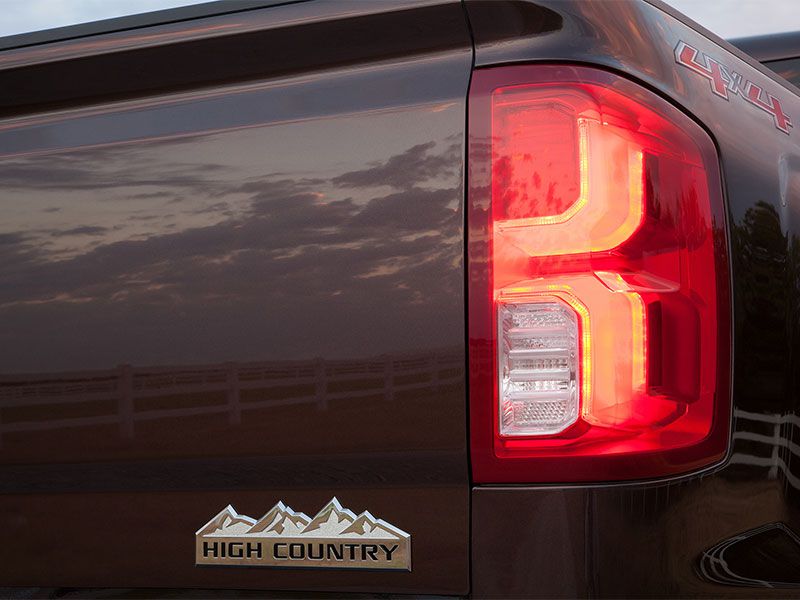
Photo by General Motors
Safety Ratings and Technology
The Silverado can be had with advanced safety features like forward collision warning, automatic low-speed braking, and a lane-keeping assistance system that will nudge the truck back into its lane. Chevrolet also offers the Safety Alert Seat, which vibrates the driver’s seat cushion as a warning rather than relying on auditory alerts. But when it comes to advanced driver aids, Ford goes further: Along with collision avoidance and lane-keeping assistance, the F-150 can be had with a blind spot warning system (which can compensate for a trailer) and adaptive cruise control. Both the Silverado and the F-150 have earned five stars in government crash testing (not a difficult thing to do), but there’s a more pronounced difference in the Insurance Institute for Highway Safety crash testing. The Silverado scores Good (the best rating) in all but the difficult small-overlap crash test, where it scored a second-highest Average. The F-150 rated Good in all tests, and combined with its optional collision-avoidance system, it earned a Top Safety Pick award.
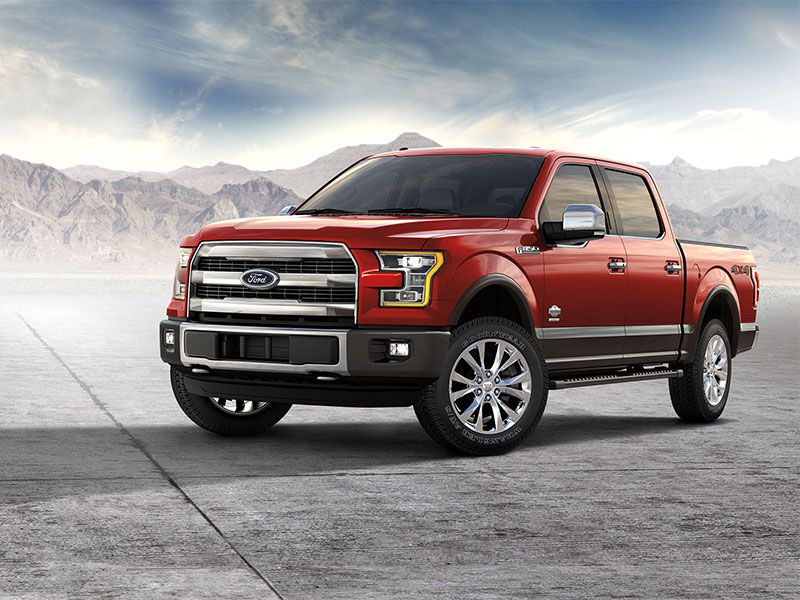
Photo by Ford
Which is Best?
Our job would be easy if there was a clear winner here, but there really isn’t. Clearly, Ford is the technology champ: It has more advanced safety and driver-assistance hardware and cool-to-have features like self-parking and trailer back-up assistance. We love the premise of its high-tech engines, and if you’re looking for value, the F-150 XL can be had for less money than the entry-level Silverado. But that doesn’t mean we are anywhere close to counting out Chevrolet. We prefer the design and usability of the Silverado’s interior, and while its payload doesn’t measure up to the F-150, it’s the towing champ by a decent margin. Its engines may not seem fancy, but they are based on solid engineering principles that have been powering trucks for decades, and when there’s a job to be done we’ll take low-end pulling power over fancy technology any day. Making the best choice between these two trucks comes down to personal preferences and job requirements more than anything else. And you know what that means: The Chevy vs. Ford battle will rage on for many years to come.
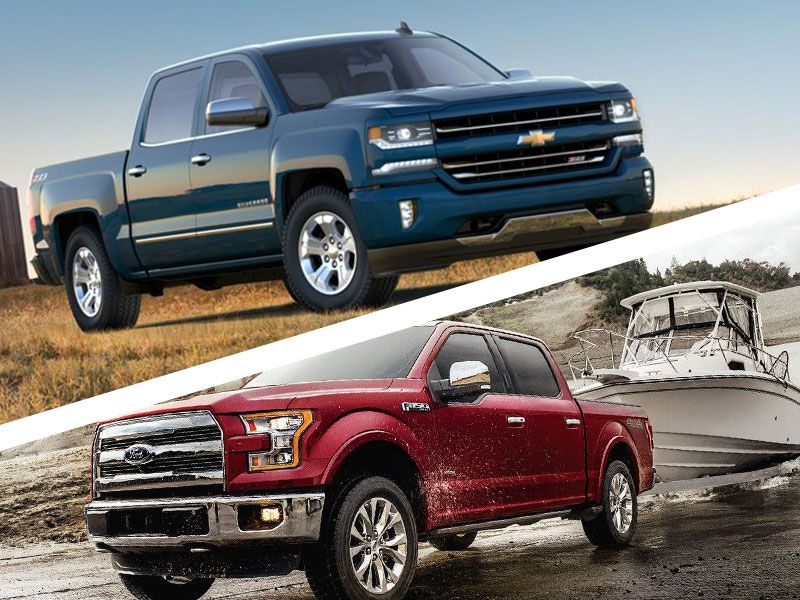
Photo by Ford and General Motors